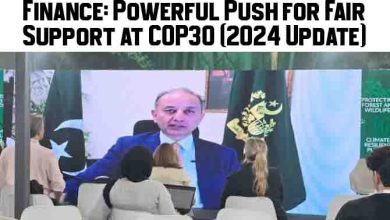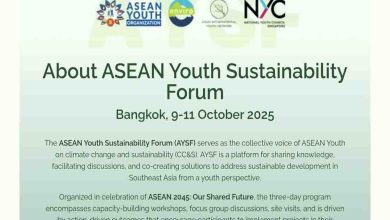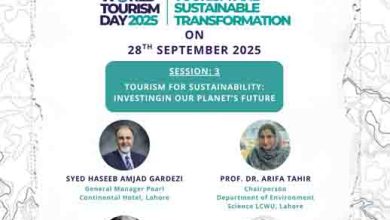Nawaz Calls for PPP-Govt Dialogue on Water Issue to Resolve Punjab-Sindh Dispute
Nawaz Sharif urges the federal government to initiate a PPP-govt dialogue on the water issue between Punjab and Sindh. Political point-scoring must stop.
Nawaz calls for PPP-govt dialogue on water issue—a development that signals a significant shift in the federal approach to a heated dispute between Punjab and Sindh. As tensions flare over the controversial canal project on the Indus River, former Prime Minister and Pakistan Muslim League-Nawaz (PML-N) head Nawaz Sharif has stepped in with a call for calm, urging both parties to prioritize national unity over political posturing.
Nawaz Sharif’s Directive from London
Currently undergoing medical treatment in London, Nawaz Sharif has issued a directive to the federal government, asking it to open a PPP-govt dialogue on the water issue to resolve growing concerns and mistrust between the provinces.
According to a public statement by Rana Sanaullah Khan, Adviser to the Prime Minister and PML-N Punjab president:
“We firmly believe in the fair distribution of resources, including water, among all federating units. Nawaz Sharif and Prime Minister Shehbaz Sharif have directed us to resolve these issues with the Pakistan Peoples Party (PPP) through dialogue.”
This development follows sharp criticism from PPP Chairman Bilawal Bhutto-Zardari regarding the federal government’s stance on new canals being constructed on the Indus River.
Bilawal Bhutto-Zardari’s Strong Opposition
In a fiery public speech delivered in Hyderabad on Friday, Bilawal Bhutto-Zardari didn’t hold back:
“The lion (PML-N’s election symbol) always preys on the people’s blood. The Shehbaz Sharif government’s policies are anti-farmer. Those planning this project owe their power to the PPP.”
He warned that if the controversial canal project is not shelved, PPP may withdraw its support from the PML-N-led government, which could significantly impact its ability to pass budgets or hold assembly sessions.
“If Shehbaz Sharif isn’t ready to withdraw the project, we are not ready to give up either,” Bilawal asserted.
Rana Sanaullah Urges Dialogue Over Politics
In a measured and diplomatic tone, Rana Sanaullah responded:
“We hold the PPP leadership in great respect. The PPP is part of the federation, and statements made from constitutional positions must be delivered with a sense of greater responsibility.”
He emphasized that political point-scoring should not take precedence over national interest, especially in matters like water distribution which impact millions of lives and the agricultural backbone of Pakistan.
“Matters must be resolved through dialogue and negotiation at the table,” Sanaullah stressed.
Legal Framework: The 1991 Water Accord & IRSA Act
Pakistan’s water distribution is governed by the 1991 Water Accord and the 1992 IRSA (Indus River System Authority) Act. According to Rana Sanaullah:
“No province’s water share can be diverted to another one. These constitutional mechanisms ensure that every federating unit receives its fair share.”
These remarks aim to ease fears among Sindh’s population that Punjab might be overreaching or manipulating the federal machinery to access more than its allocated share of water resources.
PPP’s Growing Frustration
PPP leadership, particularly Bilawal Bhutto-Zardari, believes that Punjab’s actions threaten Sindh’s water security, a deeply emotional and politically sensitive issue in the province.
“We supported the current government for the sake of the federation. But we cannot support anti-people projects,” said a senior PPP leader on condition of anonymity.
PPP’s growing frustration is rooted in the belief that the federal government is undermining provincial autonomy, especially on critical issues like water resource management.
Impact on the Federation
The current standoff has the potential to widen the trust deficit between provinces, especially between Punjab and Sindh, which have had a historic rivalry over water allocation. Nawaz Sharif’s intervention appears to be a strategic move to preserve coalition harmony and uphold constitutional responsibilities.
As Rana Sanaullah noted:
“As a party committed to the Constitution and democracy, we will never compromise on the rights of federating units and their people.”
He added that PML-N views provincial strength as the federation’s strength and emphasized that all grievances must be addressed through legal and institutional frameworks.
Conclusion: Need for Dialogue and Unity
The call from Nawaz Sharif for a PPP-govt dialogue on water issue comes at a critical moment for Pakistan’s democratic integrity and federal cohesion. With growing regional tensions and rising public sentiment in Sindh, dialogue offers the only viable path forward.
Political leaders across party lines must now rise above personal and party interests to ensure equitable water distribution, uphold constitutional principles, and preserve the unity of the federation.







